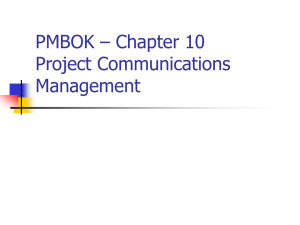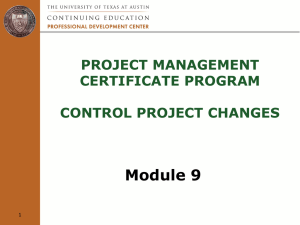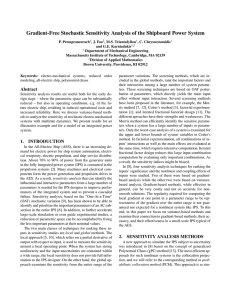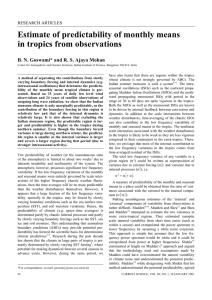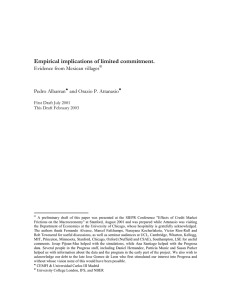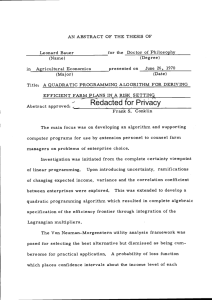Processes - McGraw Hill Higher Education
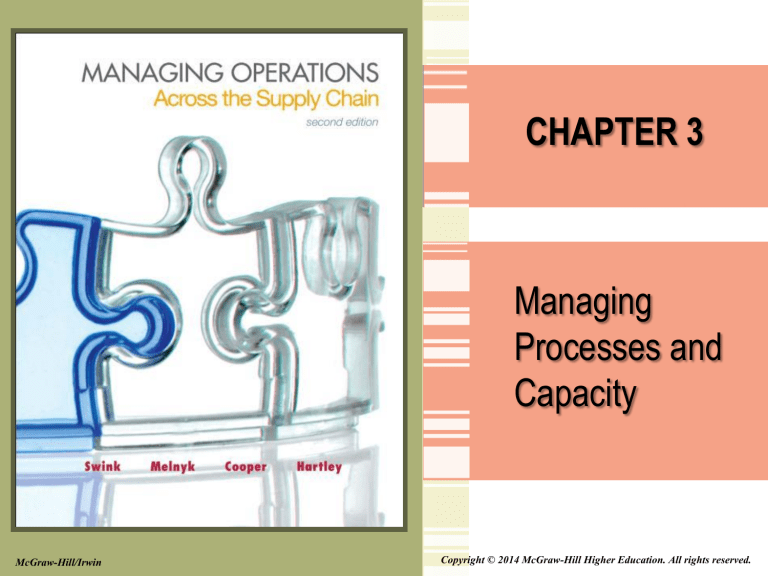
McGraw-Hill/Irwin
CHAPTER 3
Managing
Processes and
Capacity
Copyright © 2014 McGraw-Hill Higher Education. All rights reserved.
Learning Objectives
LO3-1 Understand the importance of processes and process thinking
LO3-2 Define the various components of a process
LO3-3 Distinguish between operational, tactical, and strategic capacity planning
LO3-4 Estimate capacity and utilization
LO3-5 Explain the impacts of bottlenecks, variance, and other factors on performance.
LO3-6 Describe process improvement methodologies
3 –2
LO3-1
What is a process?
• A system of structured activities that use resources to turn inputs into valuable outputs.
• Process thinking views activities in an organization as a collection of processes
3 –3
LO3-2
Activities of a process
Operations change inputs
Transportation moves an input from place to place
Inspection verifies the results of an activity
Delay unintentionally stops the flow of an input
Storage is the formal inventorying of an input
3 –4
LO3-4
Process Capacity
Capacity: amount of input that can go into or the amount of output that can be created by a process, at a given level of resources over a given time period
3 –5
Theory of Constraints (TOC)
1. Every process has a constraint
2. Every process has variance that consumes capacity
3. Every process must be managed as a system
4.
Process measures are crucial to the process’s success
5. Every process must continually improve
LO3-5
3 –6
LO3-5
Every Process has a Constraint
Measures of process flow:
• Flow time : time for one unit to get through a process
• Cycle time : time it takes to process one unit at an operation in the overall process
• Little’s Law : there is a relationship between flow time (F), inventory level (I) and throughput rate (TH)
3 –7
Variance Consumes Capacity
Variability in:
• Outputs : product variety and variable schedules
• Processes : quality variance, resource availability, and processing speed
• Inputs : variance in quality and delivery
LO3-5
3 –8
LO3-5
Processes Managed as Systems
• Changing one element of a process may impact other elements, sometimes in unexpected ways.
• Process elements are interdependent
–Activities
–Inputs/Outputs/Flows
–Process structures
–Management policies
3 –9
LO3-5
Measure Processes for Success
Metrics should address aspects of performance that are important to both customers and the organization.
3 –10
LO3-5
Continuous Improvement of
Processes
Kaizen : focused, incremental improvement efforts small + small + small + small
+ … + n =
LARGE
3 –11
Managing Process and Capacity:
A Summary - Part I
1. Processes define a business.
2. A process is a collection of activities.
3. Processes are characterized by activities, flows, structures, resources, and metrics.
4. Supply chain capacity should be managed strategically.
5. There is a proven link between output volumes and process economies.
3 –12
Managing Process and Capacity:
A Summary - Part II
6. The bottleneck activity sets the maximum level of output of any process.
7. Capacity requirements depend on processing and setup times.
8. Variability consumes capacity, cost, and lead times.
9. Processes need to be continuously improved
3 –13
